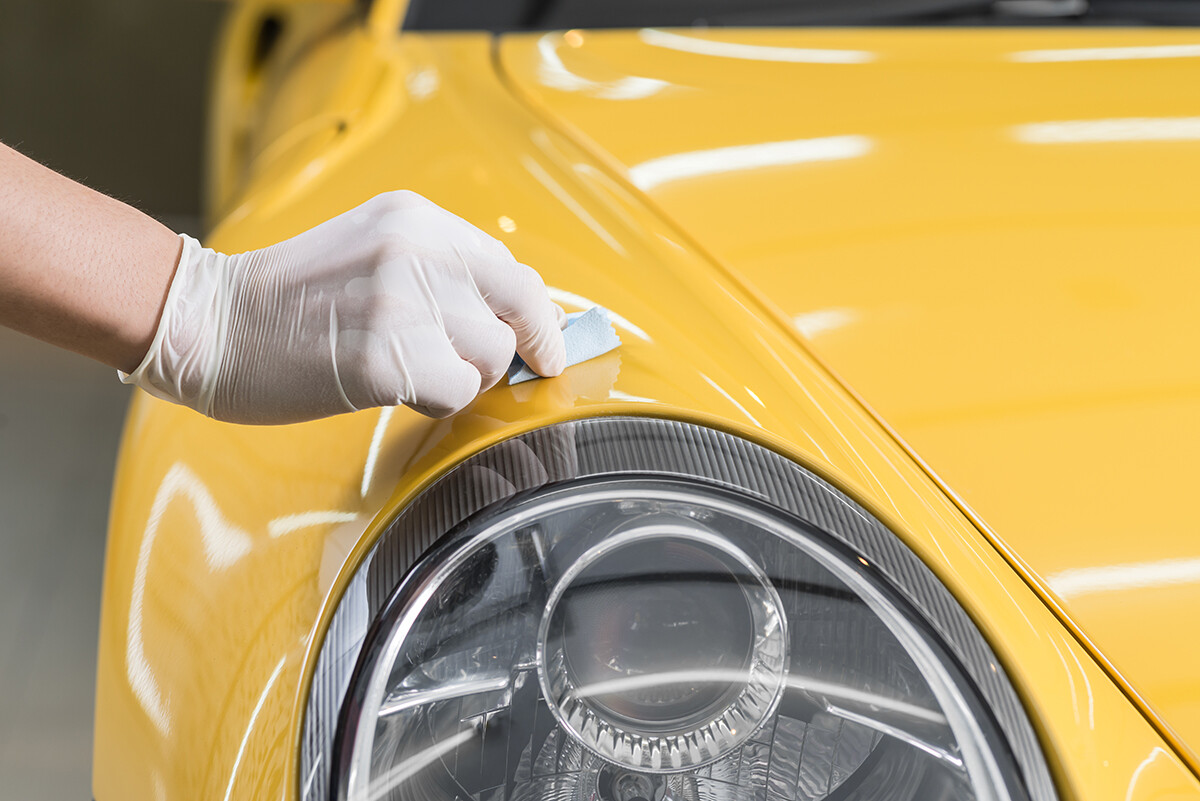Revealing the Science Behind Ceramic Coatings: Exactly How Does It Work and Why Is It Superior to Typical Choices?
Ceramic finishings have actually been obtaining popularity in various industries for their remarkable performance and toughness. The scientific research behind these finishings goes past simple surface protection, delving into the elaborate chemistry that makes them stand out from traditional options (ceramic coatings san jose). Understanding how ceramic finishings work and why they outmatch standard choices is critical for those looking for to boost the long life and durability of their materials. So, exactly what sets ceramic finishings apart, and exactly how do they accomplish such amazing results?
The Chemistry of Ceramic Coatings
In comprehending ceramic finishings, delving right into the detailed chemistry behind their structure is necessary for grasping their capability and resilience. Ceramic layers are mostly composed of silicon dioxide (SiO2), which develops a strong and safety layer when put on various surface areas. This chemical structure supplies extraordinary resistance to warmth, chemicals, and rust, making ceramic coatings highly looked for after for a vast array of applications.
The chemistry behind ceramic finishes entails the formation of covalent bonds between silicon and oxygen atoms, producing an inflexible network that boosts the coating's durability and resilience. In addition, the presence of other components such as titanium, light weight aluminum, and zirconium further boosts the covering's residential properties, offering increased firmness and attachment to surface areas.
Understanding the chemical structure of ceramic coatings enables the modification of formulations to fit certain demands, whether it be for automotive, industrial, or domestic functions. By using the power of chemistry, ceramic coverings remain to lead the way for superior protection and performance in various markets.
Advantages of Ceramic Coatings

An additional considerable advantage of ceramic finishes is their hydrophobic nature. This building triggers water to bead up and roll off the covered surface, bring dirt and impurities with it. As a result, ceramic coatings make cleansing and maintaining surface areas a lot easier and much less lengthy. Ceramic finishes offer improved gloss and color deepness, offering surfaces a glossy and lively appearance. In general, the plethora of benefits used by ceramic layers make them an exceptional alternative compared to conventional layer methods.
Just How Ceramic Coatings Bond
Ceramic coatings bond to surface areas via a procedure that includes molecular bond and chemical interactions. When a ceramic finishing is applied to a surface, it creates a solid bond by chemically adhering to the surface at a molecular degree.
In addition, the chemical communications between the ceramic covering and the surface better boost the bond. ceramic coatings san jose. These interactions allow the ceramic coating to develop a smooth and constant layer externally, offering excellent defense and toughness. Unlike standard finishings that may remain on the surface without totally bonding, ceramic finishes produce an irreversible bond that is immune to chemicals, UV rays, and extreme environmental conditions

Basically, the bonding device of ceramic finishes guarantees a reliable and resilient protective layer that outperforms standard finishing choices. This premium bond contributes to the resilience, scrape resistance, and durability of ceramic coverings, making them a recommended option for numerous applications.
Sturdiness of Ceramic Coatings
The remarkable long life of ceramic finishings originates from their robust molecular bond and chemical interactions with surfaces, making certain a resilient safety layer that surpasses traditional finish alternatives. Once applied, ceramic layers form a strong bond with the substratum, creating a durable obstacle versus different environmental stress factors such as UV radiation, chemicals, and abrasions. This bond is so safe and secure that it can endure the roughness of day-to-day use without degrading or weakening quickly.
Unlike standard coverings that may break down with time, ceramic coatings preserve their stability for an extensive duration, giving long-lasting protection for the underlying surface. The strong go to my site molecular structure of ceramic finishes stands up to damaging, fading, and peeling, ensuring that the surface area remains shielded and aesthetically pleasing for years to find. This sturdiness not just minimizes the requirement for constant reapplications yet additionally conserves money and time in the long run. Overall, the extraordinary toughness of ceramic finishes makes them a premium selection for shielding a large range of surface areas in numerous applications.
Ceramic Coatings Vs. Standard Choices
In contrast to standard coating methods, ceramic finishings use a distinct mix of durability and protective capabilities that set them apart in various surface protection applications. Traditional options such as wax or sealants provide a temporary layer of protection that can wear off quickly, requiring constant reapplication. On the various other hand, ceramic layers create a solid bond with the surface area, producing a long-term or semi-permanent barrier that is highly resistant to abrasion, chemicals, UV rays, and severe temperature levels.
Additionally, ceramic finishes use exceptional hydrophobic buildings contrasted to conventional coverings. The hydrophobic nature of ceramic coverings causes water to grain up and roll off the surface area, carrying dust and pollutants with it. This self-cleaning impact helps to keep the surface area's tidiness and gloss for extended durations, decreasing the need for constant maintenance.
Additionally, ceramic layers have a thicker layer contrasted to conventional alternatives, providing improved scrape resistance and defense versus minor influences. This sturdiness ensures durable performance and aids protect the visual charm of the dealt with surface for an extensive period.
Verdict
Finally, the science behind ceramic finishes hinges on their chemical make-up and bonding homes, making them superior to standard alternatives. The benefits of ceramic finishes include raised toughness and defense for surfaces. By comprehending exactly how ceramic coverings job and their benefits over conventional alternatives, one can make informed decisions when taking into consideration covering choices for different applications.
Unlike standard coverings that may sit on the surface area without totally bonding, ceramic coverings produce an irreversible bond that is resistant to chemicals, UV rays, and severe ecological problems.
The remarkable durability of ceramic finishes stems from their durable molecular adhesion and chemical interactions with surfaces, making sure a long lasting safety layer that goes beyond traditional covering options.Unlike standard finishes that might weaken over time, ceramic coatings maintain their integrity for an extended period, offering resilient security for the underlying surface area.In contrast to traditional finish approaches, ceramic coverings provide a distinct mix of longevity and safety capabilities that set go to my blog them apart in various surface security applications. By recognizing just how ceramic layers job and their benefits over typical alternatives, one can make enlightened choices Discover More Here when taking into consideration coating choices for different applications.